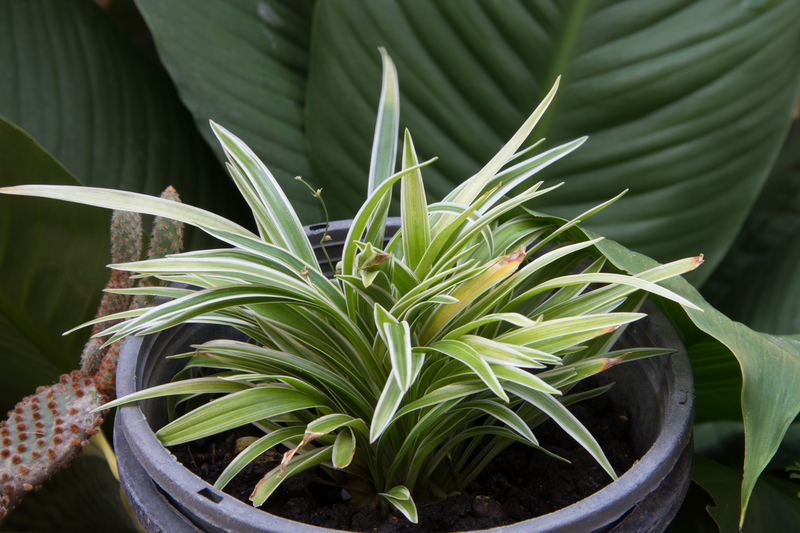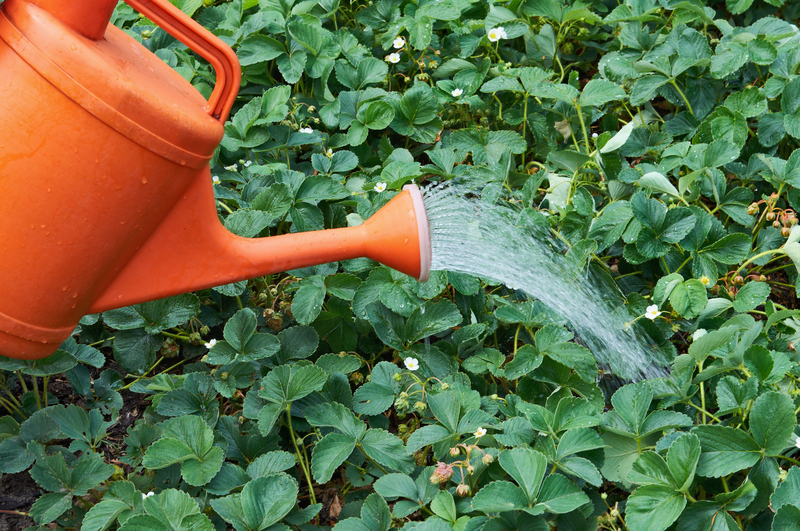Flourish for Less: 5 Low Maintenance Garden Strategies
Posted on 26/08/2025
Flourish for Less: 5 Low Maintenance Garden Strategies
Are you dreaming of a beautiful, thriving garden but daunted by the thought of endless upkeep? You're not alone! Creating a vibrant outdoor space doesn't have to break the bank - or consume all your weekends. With clever, low maintenance gardening strategies, your landscape can flourish for less time and money. In this comprehensive guide, we'll explore five low maintenance garden strategies that deliver lush beauty without the high effort. Learn how you can cultivate a stunning, cost-effective garden and spend more time relaxing in it!

Why Choose Low Maintenance Landscaping?
Before delving into the specifics, it's important to understand the benefits of implementing low-effort gardening methods:
- Cost savings from reduced water, fertilizer, and plant replacement needs.
- Time savings, so you spend fewer hours weeding, pruning, or mowing.
- Eco-friendly solutions that support pollinators and conserve resources.
- Resilient landscapes capable of weathering droughts and unpredictable weather.
- Lasting beauty with less risk of plant diseases or die-offs.
Whether you're a busy homeowner, a gardening novice, or someone seeking a sustainable outdoor sanctuary, flourishing gardens for less effort are entirely within reach.
Strategy #1: Choose the Right Plants for Your Zone
Why Native & Adapted Plants Matter
When you think of a low maintenance garden, the foundation is your plant choices. The single most effective way to reduce work and expense is by choosing plants that thrive naturally in your region.
- Native plants are adapted to your climate, soil, and rainfall patterns. They're less prone to pests, require minimal watering, and support local wildlife.
- Drought-tolerant plants (like succulents, lavender, and ornamental grasses) reduce irrigation needs and flourish through dry spells.
- Avoid "high-input" plants that need constant fertilizing, pruning, or disease control.
Pro Tip: Visit your local nursery or botanical garden for recommendations on the best low effort plants for your area. Native plant societies are also a terrific resource!
Top Low Effort Plant Picks
- Perennials (like daylilies, coneflowers, black-eyed Susans) that return year after year.
- Groundcovers (such as creeping thyme or sedum) to suppress weeds and fill in gaps.
- Flowering shrubs (hydrangeas, spirea, viburnums) that offer seasonal interest.
- Mulch-friendly trees with few leaf drops, such as serviceberry or redbud.
With these selections, you'll spend less time babysitting and more time enjoying the view.
Strategy #2: Mulch - Your Secret Weapon for an Effortless Garden
If you want your garden to flourish for less work, put mulch at the top of your list. Mulching is a game-changer for reducing weeds, retaining moisture, and nourishing your soil.
How Mulch Reduces Maintenance
- Suppresses Weeds: A 2-4 inch layer makes it hard for weeds to sprout, so you weed far less often.
- Conserves Water: Mulch prevents evaporation, helping soil stay moist and cool - ideal for healthy roots.
- Feeds Your Garden: Organic mulches (wood chips, shredded leaves, compost) slowly decompose to improve soil fertility naturally.
Tip: Reapply mulch annually for best results, and keep it a few inches away from stems or trunks to prevent rot.
Best Mulch Materials for Low Maintenance Landscapes
- Bark or wood chips - ideal for shrub beds or around trees.
- Compost - boosts soil nutrients for flower or vegetable gardens.
- Pine needles - perfect for acid-loving plants and natural-looking paths.
- River rocks or gravel - long-lasting and excellent for xeriscape or Mediterranean-style gardens.
Mulch not only looks beautiful but packs powerful, low-effort benefits to help your garden thrive for less intervention.
Strategy #3: Smart Watering Solutions for Stress-Free Gardening
Watering needs can make or break a low maintenance yard. With a few smart choices, you can keep your garden lush while minimizing water, time, and expense.
Ditch Daily Watering: Embrace Deep, Infrequent Soaks
- Water deeply, not daily: Frequent, shallow watering encourages weak roots. Watering once or twice a week (but thoroughly) builds drought-tolerant plants and saves time.
- Early morning is best: Watering before 10 a.m. minimizes evaporation and keeps foliage dry, reducing disease risk.
Upgrade to Low Maintenance Irrigation
- Drip irrigation systems deliver precise moisture to plant roots and can be automated with timers - no more hand watering!
- Soaker hoses weave between plants for even watering with minimal waste.
- Rain barrels collect free water for your garden and reduce your water bill.
Smart irrigation is one of the most effective ways to help a garden flourish for less hassle.
Strategy #4: Simple Garden Design for Effortless Upkeep
Designing your space with ease in mind is the key to a thriving yet low maintenance garden. Here's how to shape your landscape for both beauty and practicality:
Create Defined Beds and Borders
- Raised beds or clear edging prevent grass from encroaching and make mowing a breeze.
- Group similar plants together (by sun, water, or maintenance needs) to simplify care and boost visual appeal.
Limit Lawn Areas for Less Labor
- Smaller lawns reduce mowing, fertilizing, and watering. Replace turf with groundcovers, mulch, or flower beds.
- Switch to low-care grasses (like fine fescues or buffalo grass) that need little mowing or watering.
Paths and Patios for Carefree Enjoyment
- Hardscaping (such as stone paths, patios, or gravel seating areas) cuts down on planting space, and thus maintenance, while adding functionality.
- Permeable materials like gravel or pavers allow rainwater to pass through, reducing runoff and supporting a healthy garden ecosystem.
A smart layout means you can enjoy a lush, flourishing garden with a fraction of the usual effort.
Strategy #5: Routine, Not Rigor - Set a Simple Maintenance Schedule
To truly flourish for less, swap random big chores for a consistent, easy maintenance routine:
- Weed regularly, not all at once: Five minutes here and there beats a back-breaking afternoon!
- Prune at the right time: Prune flowering shrubs after they bloom; cut back perennials in late winter or early spring for neatness and healthy regrowth.
- Feed wisely: Use slow-release organic fertilizers or top-dress with compost annually - no need for fussy schedules.
- Inspect for pests: Walk your garden weekly to spot problems early. Most low effort gardens attract beneficial insects that naturally control pests!
Tip: Mulch, dense planting, and healthy soil go a long way toward preventing weeds, diseases, and other time-consuming headaches. The right routine helps your garden flourish for less stress and hassle!
Bonus Tips to Maximize Garden Beauty with Minimal Effort
- Self-seeding annuals: Let nature fill in gaps by choosing flowers that reseed effortlessly, such as cosmos, poppies, or calendula.
- Container gardening: Group low-care pots by balconies, patios, or entryways for color and interest with ultra-easy watering and weed control.
- Compost in place: Allow cuttings or leaves to decompose where they fall in less formal beds, enriching soil and reducing yard waste.
- Automate lighting: Solar or LED landscape lights highlight your garden's best features at night, with no extra wiring or energy bills.
Even a few of these simple strategies can help your flower beds and borders flourish for less upkeep throughout the year!
Common Low Maintenance Garden Mistakes to Avoid
To get the most from your garden with the least effort, steer clear of these common pitfalls:
- Planting "needy" species that require constant feeding, deadheading, or protection from pests.
- Overwatering or underwatering due to lack of a schedule or inefficient irrigation.
- Neglecting soil health - always test and amend before planting for the easiest long-term care.
- Underusing mulch, which invites weeds and increases water needs.
- Poor planning - mismatched plants, random layouts, or overcrowding cause maintenance headaches later on.
Planning ahead and following the flourish for less approach will save you time, money, and garden frustration.

Low Maintenance Gardening: Frequently Asked Questions
What are the best low maintenance garden plants for beginners?
Top picks include daylilies, sedum, hostas, lavender, ornamental grasses, and native wildflowers. These plants are tolerant of varying conditions and rarely need special treatment.
How do I reduce weeds long-term?
Dense planting, annual mulching, and effective edging are the best strategies. Avoid bare soil and keep up routine maintenance for the lowest effort weed control.
Can I have color and blooms in a low effort garden?
Absolutely! Choose easy-care perennials like coneflowers, black-eyed Susans, and Russian sage, and supplement with self-seeding annuals or colorful foliage plants.
Do low effort gardens attract pollinators?
Yes! Native plants, diverse flowers, and natural mulch structures create welcoming habitats for bees, butterflies, and beneficial insects.
Conclusion: Flourish for Less with Smart Garden Practices
With the right approach, you can enjoy a lush, flourishing garden for less work and money. By selecting resilient plants, harnessing the power of mulch, employing efficient watering, designing for ease, and following a simple maintenance routine, you'll cultivate a beautiful landscape that practically takes care of itself.
Remember, the secret of low maintenance gardening is to work smarter, not harder. Whether you have a large yard or a cozy patio, these strategies will help your garden stay vibrant and inviting all year long.
Embrace these expert, budget-friendly solutions and watch your outdoor space truly flourish for less - giving you more time to simply enjoy the beauty you've created!

